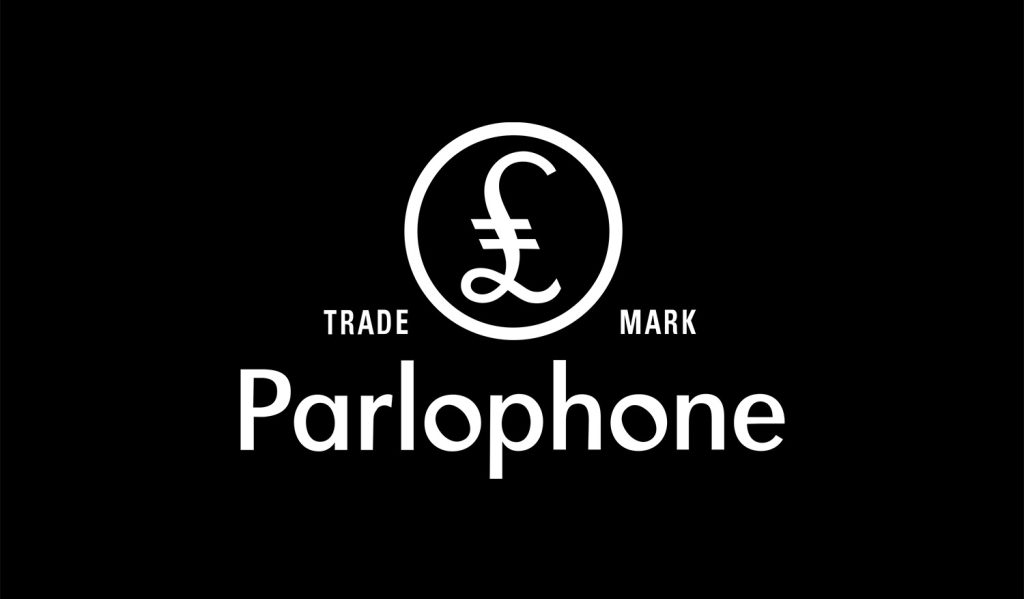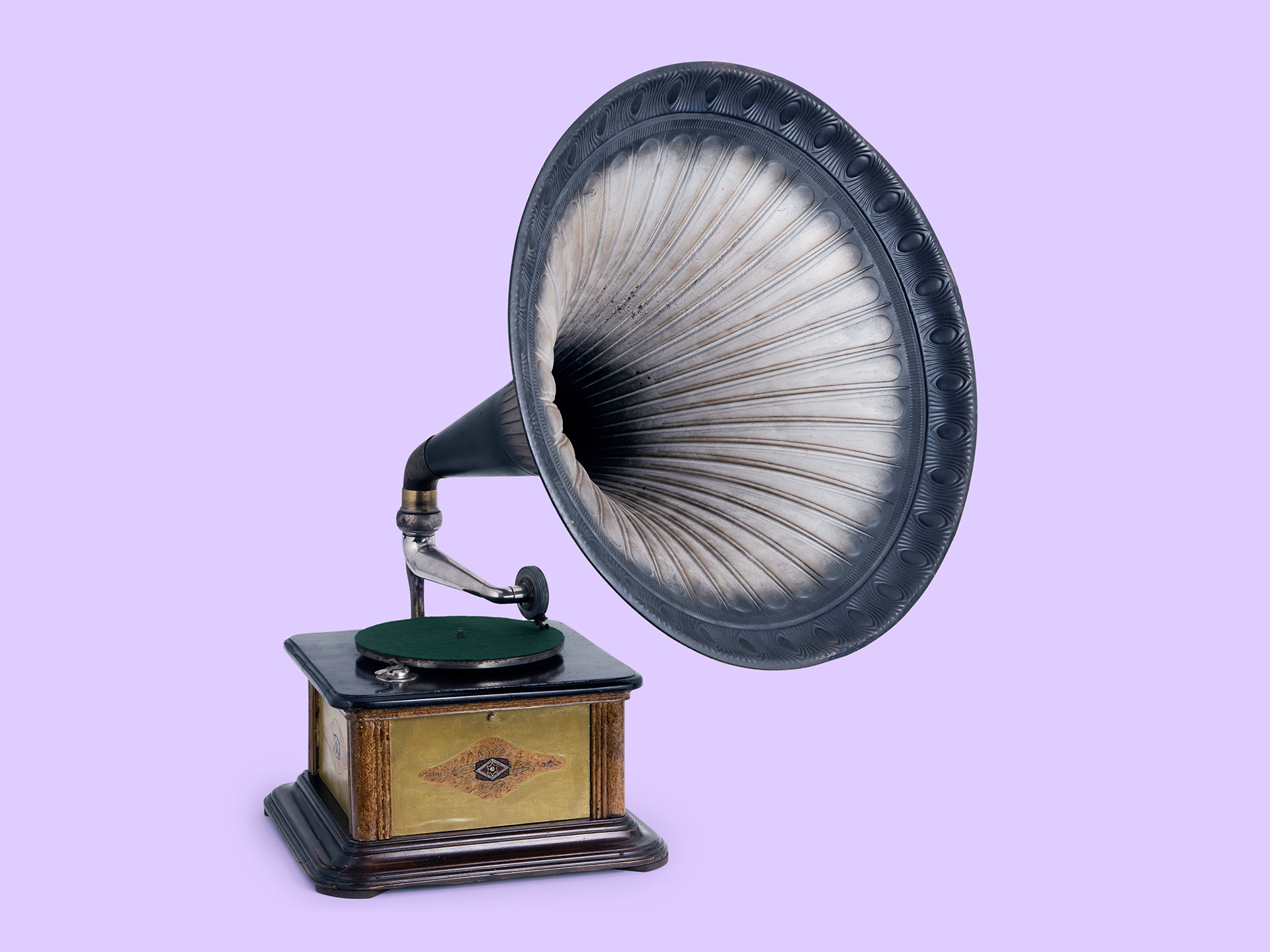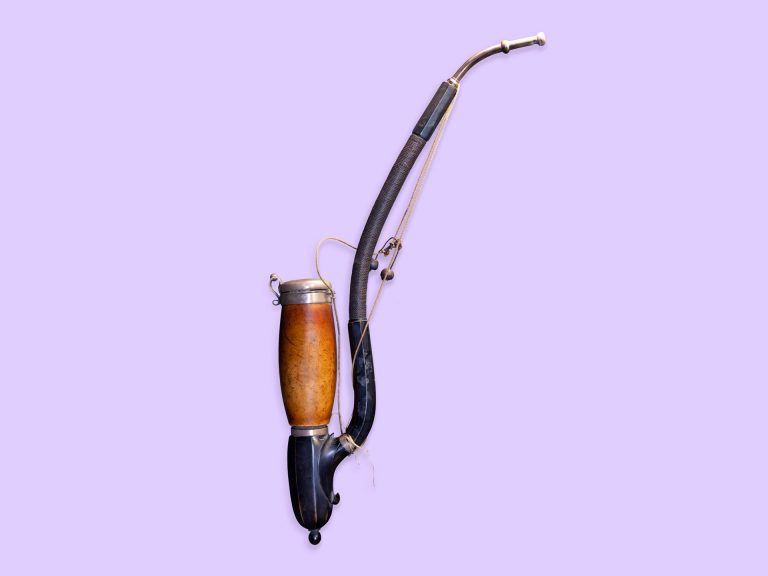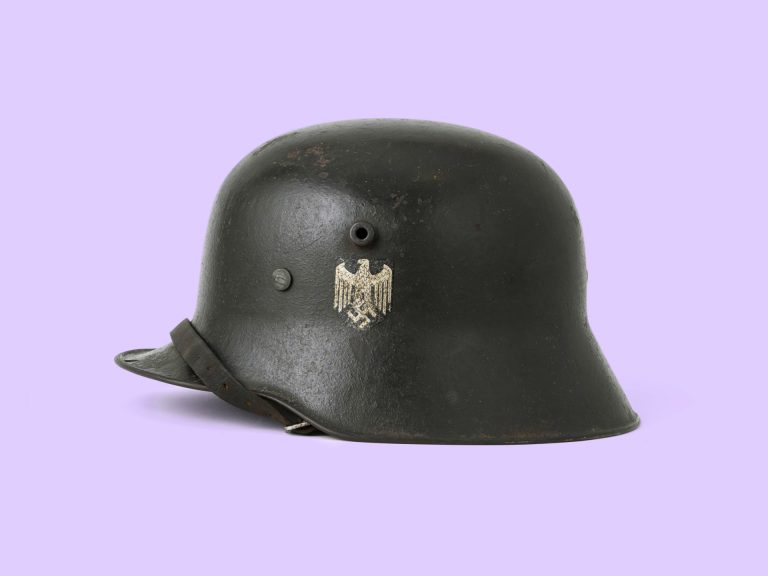Technological advance brings the music hall into the living room
Invented in 1887, the gramophone soon advanced to stunning international popularity. The state of the art in terms of sound and price, the new technology was clearly superior to rival forms of sound reproduction like phonographs; the development of the shellac gramophone record in 1895 only enhanced the device’s dominant position.
The main elements of a gramophone are the sound box and a funnel, the shape and material of which have a decisive effect on sound quality. The pickup uses a needle to trace the grooves of a spinning record; the movements of the needle are converted into sound waves by a membrane inside the sound box and transmitted to the funnel via the tonearm.
The material and shape of the funnel play a major role in the character of the sound produced. For example, funnels with hard, smooth surfaces reproduce high tones better, whilst a wooden funnel produce a warmer sound. The model on display in the Deutschlandmuseum is an impressive specimen: 40 cm in diameter; 55 cm in length.
The spring drive for the disc plate was wound using a crank mounted on the left-hand side of the device. The elegantly grained wooden housing features ornate inlays and contributes to the prestige that ownership of such a device was intended to confer. The gramophone is still in perfect working order and produces an impressive sound.
Carl Lindström: a Swede in Berlin
The gramophone on display in the Deutschlandmuseum comes from the workshops of Carl Lindström AG, one of the leading European manufacturers of records and gramophones at the time. Opening a mechanical workshop in Berlin in 1897, the Swede Carl Lindström initially concentrated on the manufacture of phonographs, an early form of audio recorder; he later diversified into the production of records and gramophones under the brand name Parlophon. The modified brand name Parlophone was used for the international market.

The Parlophone symbol adorned the company’s gramophones and is still used today by the Parlophone record label Trademark, UK, design variant from 1993 (Source: Wikimedia Commons)
The Parlophone record label still exists, and its trademark “£”, standing for Lindström, is still in use. The company has changed hands several times and is currently owned by the Warner Music Group. Some of the most successful artists released on the Parlophone label include the Beatles and Tina Turner.
They were never played on a gramophone, which was increasingly supplanted after the 1920s by record players using electrical pickup and amplification. With the obsolescence of sound boxes and funnels, the era of the gramophone was at an end.
Property information
Designation
- Date c. 1920
- Gallery The Weimar Republic
- Category Technology
- Origin Germany
- Dimensions 31x65x31 cm (WxHxD)
- Material metal, wood
Property information
Designation
- Datierung c. 1920
- Epochenraum The Weimar Republic
- Kategorie Technology
- Herkunft Germany
- Dimensionen 31x65x31 cm (WxHxD)
- Material metal, wood

About the Deutschlandmuseum
An immersive and innovative experience museum about 2000 years of German history
Reading tips and links
Lifesaver? The German Steel Helmet in the First World War
German Tank Museum Munster
Lifesaver? The German Steel Helmet in the First World War
German Tank Museum Munster
Share article
Other objects in this collection
Discover history

Visit the unique Deutschlandmuseum and experience immersive history
2000 Jahre
12 Epochen
1 Stunde




